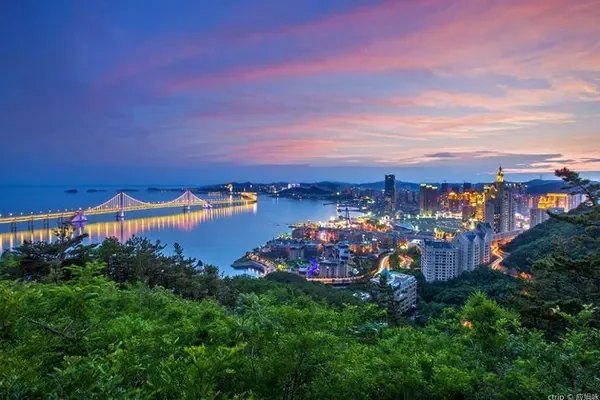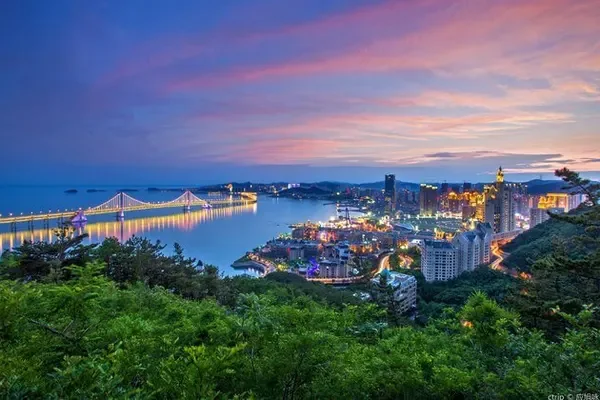Go to Zhengding for the New Year 5—Longxing Temple
After seeing the four temples, there are not many cultural relics left. I thought the same was true of Longxing Temple. After I didn’t want to see it, I was really surprised. The preserved things are so precious.
Longxing Temple, also known as Dafo Temple, was originally the Longteng Garden of Yan Murongxi during the Sixteen Kingdoms period of the Eastern Jin Dynasty. Longxing Temple was changed to Longxing Temple in the Qing Dynasty; it is one of the earliest, large-scale and well-preserved Buddhist temples in China. The temple covers an area of 82,500 square meters, with more than ten large and small halls, distributed on the north-south central axis and its two sides.
The main buildings of Longxing Temple are distributed on a north-south central axis and its two sides. There is a tall glass screen wall at the front gate of the temple, passing the Sanlu Sankong Stone Bridge to the north, followed by: Tianwang Hall, Tianjue Liushi Hall (relic), Mani Hall, Jietan, Cishi Pavilion, Zhuanlunzang Pavilion, Kangxi Imperial Stele Pavilion, Qianlong Yubei Pavilion, Yushu Building (site), Dabei Pavilion, Jiqing Pavilion (site) and Amitabha Hall, etc. In the northeast corner outside the temple wall, there is a Longquan Well Pavilion. The Abbot's Courtyard, Yuhuatang and Xiangxingzhai on the east side of the temple are the auxiliary buildings of Longxing Temple. They used to be the place where the abbot and monks lived.
Longxing Temple is different from other temples in that it has no mountain gate and only a tall glazed screen wall in front. So it is also called Wumen Temple.
There is no mountain gate in Longxing Temple, and there is only a tall glazed screen wall in front. Facing it is the Tianwang Hall, the first building of the temple. On the upper part of the door, there is a golden plaque with the words "Emperor Jianlongxing Temple" written by Emperor Kangxi, which also functions as a mountain gate.
Further inside, there is a huge abutment, which is the Hall of the Sixth Master of Tianjue (the site), and it seems that the scale is not small.
Going north through the ruins of the Dajue Six Masters Hall is the Mani Hall, which is one of the main buildings of the temple. It was built in 1052 AD (the fourth year of Emperor Renzong of Song Dynasty), with a total area of 1,400 square meters.
The most striking thing is that on the wall facing south, there are statues of Sakyamuni, Kasyapa, and Ananda's two disciples in Song Dynasty, as well as statues of Manjushri and Samantabhadra Bodhisattvas decorated with gemstones and flying ribbons in Ming Dynasty. On the east and west sides and around the main hall, except for the "Twelve Yuanjue Bodhisattvas" and "Eight Great Bodhisattvas" on the inner walls of the east and west fan walls of the inner trough, which were painted in the Qing Dynasty, the rest are painted with murals painted in the Chenghua period of the Ming Dynasty. Buddhist theme. Very beautiful and well preserved.
On the back of the fan wall, there is exquisite and unique Mount Sumeru. There are Arhats, lions, elephants and so on in the mountains. Get up, put your hands on your knees. The bridge of the nose is slightly high, the willow-leaf eyebrows are thin, the face is quiet and serene, and the posture is elegant and dignified.
After walking through a wooden archway, you will come to the altar of precepts.
Inside the altar is a copper-cast double-faced Buddha statue of the Ming Dynasty. The two Buddha statues sit facing each other with their backs connected. The one facing south is Amitabha, the leader of the Western Paradise. Sitting facing north is the leader of the Oriental Pure Glass World - Medicine Buddha. It's really beautiful, but I can't take pictures, so I had to take a picture outside the door.
Going further in, there is an imperial stele pavilion on the left and right, which belong to Kangxi and Qianlong respectively.
Behind it is the Great Compassion Pavilion. The most valuable thing is a tall bronze Bodhisattva, called "Great Compassion Bodhisattva", which is 19.2 meters high and stands on the 2.2-meter-high Xumi Stone Platform. Large bronze statue of Guanyin Bodhisattva. It was built under the order of Song Taizu Zhao Kuangyin, with 42 arms all over the body, also known as "Avalokitesvara with Thousand Hands and Thousand Eyes". Each arm holds the sun and the moon, the clean bottle, the pagoda, the King Kong, the sword, etc. Unfortunately, the 40 pairs of copper arms on both sides have been destroyed and have been replaced with wood. Only the front chest arms are original cast.
The Sumeru Stone Platform is also quite exquisite, with many stone carvings on it, in different shapes and lifelike. It's amazing.
The Pilu Hall is located at the end of the central axis of Longxing Temple. The Pilu Buddha in the hall is a national treasure. The Pilu Buddha is uniquely designed and exquisite. It was made by Ming Wanli Emperor Zhu Yijun for his biological mother, the Empress Dowager. This Pilu Buddha is all cast in bronze, 6.72 meters high, and is composed of three layers of sitting Pilu Buddha and three layers of drum-shaped lotus seats. There is a small seated Buddha cast on the thousand-leaf lotus petals of the three-story rosette, with varied expressions and handprints. There are a total of 1,072 large and small Buddha statues on the whole statue. This imperial Vairocana Buddha truly reflects the bronze casting process at that time, and is said to have extremely high historical, scientific and artistic value, and can be called an isolated example in China.
Although we are completely laymen, we are still impressed by the artistic attainments of the ancients. Nowadays, people are eager for quick success, and it is difficult to create such exquisite art treasures. The precious wealth left by the Chinese ancestors has been severely lost after several wars, and the Cultural Revolution has destroyed it for a while. It is not easy to have these relics in Zhengding. It must be well protected.













































